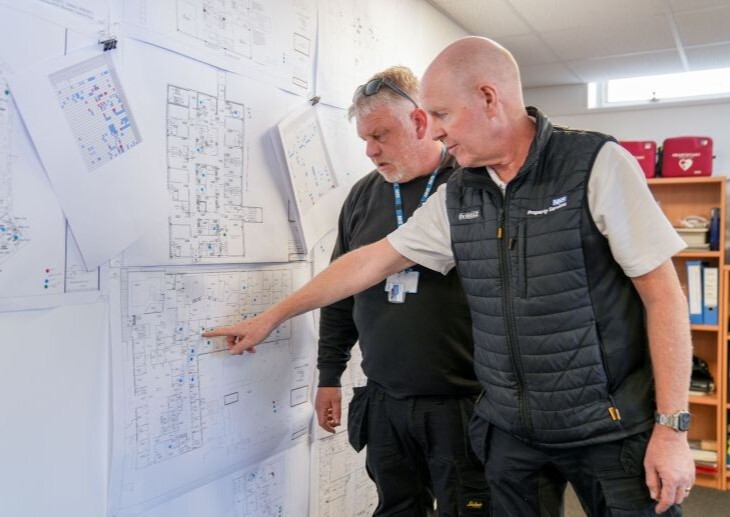NHS Property Services (NHSPS) has unveiled its largest heat pump installation to date at Royal South Hants Hospital (RSH), in a step towards meeting the NHS’s commitment to achieving net-zero carbon emissions by 2040. Nick Macdonald Smith, NHSPS’ net zero carbon lead shares more
The heat pump installation at RSH is a blueprint for sustainable transformation across the healthcare estate.
At the heart of this decarbonisation effort are seven heat pumps (four air source heat pumps (ASHPs) and three water-to-water heat pumps) housed in a repurposed car park beneath the Mary Seacole building.
The RSH project is part of a broader strategy, with NHSPS investing in 20 decarbonisation projects last year and targeting a total of 90 over the next three years under its Green Plan. The installation at RSH is the largest carbon reduction initiative in an NHSPS building to date, with an estimated 500 tonnes of CO₂ emissions expected to be saved in the first year alone.
Longer term upgrades
The heat pump installation is just one component of a site-wide upgrade. Over the past three to four years, RSH has undergone phased improvements including:
- Triple-glazed windows,
- Cavity wall insulation,
- Insulated panels above windows,
- A solar PV array across roof elevations,
- A full power upgrade to support the new systems.
This holistic approach was driven by the need to redevelop the site and move away from an aging, gas-fired district heating network.
Rather than reinvesting in fossil fuel-based boiler systems, we opted for a decarbonisation package, funded through a combination of backlog maintenance budgets and over £3m in capital from the Energy & Environment team.
Paul Beach, senior capital manager at NHSPS, said: ‘Delivering the largest carbon reduction initiative in an NHSPS building to date has been a landmark achievement for our team. By integrating seven advanced heat pumps into a repurposed car park beneath the Mary Seacole Building, we’ve demonstrated how smart engineering and creative use of space can drive meaningful environmental impact.’
Financial and environmental impact
While we continue to assess the full financial benefits, the environmental returns are already clear. By combining solar PV with heat pump technology, we’re harnessing renewable energy and reducing our reliance on the grid – making our buildings more resilient and future-ready.
The future of heat pumps in healthcare
As the NHS accelerates its journey toward net zero, heat pumps are poised to play a pivotal role. These systems use refrigeration cycle technology (similar to domestic fridges) to efficiently generate heat using electricity. With the UK’s energy grid increasingly powered by renewables like wind and solar, the carbon intensity of electricity is falling, making heat pumps a cleaner alternative to traditional gas and oil boilers.
In March 2025, we published our updated Green Plan, celebrating the 20 decarbonisation projects completed in 2024 and setting our sights on 90 more. Heat pumps will be central to that vision, replacing fossil fuel systems across our estate and helping us build a healthcare system that’s as healthy for the planet as it is for patients.
We are committed to achieving net zero carbon across our estate. Embracing innovative technologies like heat pumps is a vital step in decarbonising our estate and delivering sustainable, energy-efficient healthcare environments.
By investing in low-carbon heating solutions, we are not only reducing emissions but also future-proofing our buildings for generations to come and supporting the NHS’s broader mission of health and wellbeing for all.




